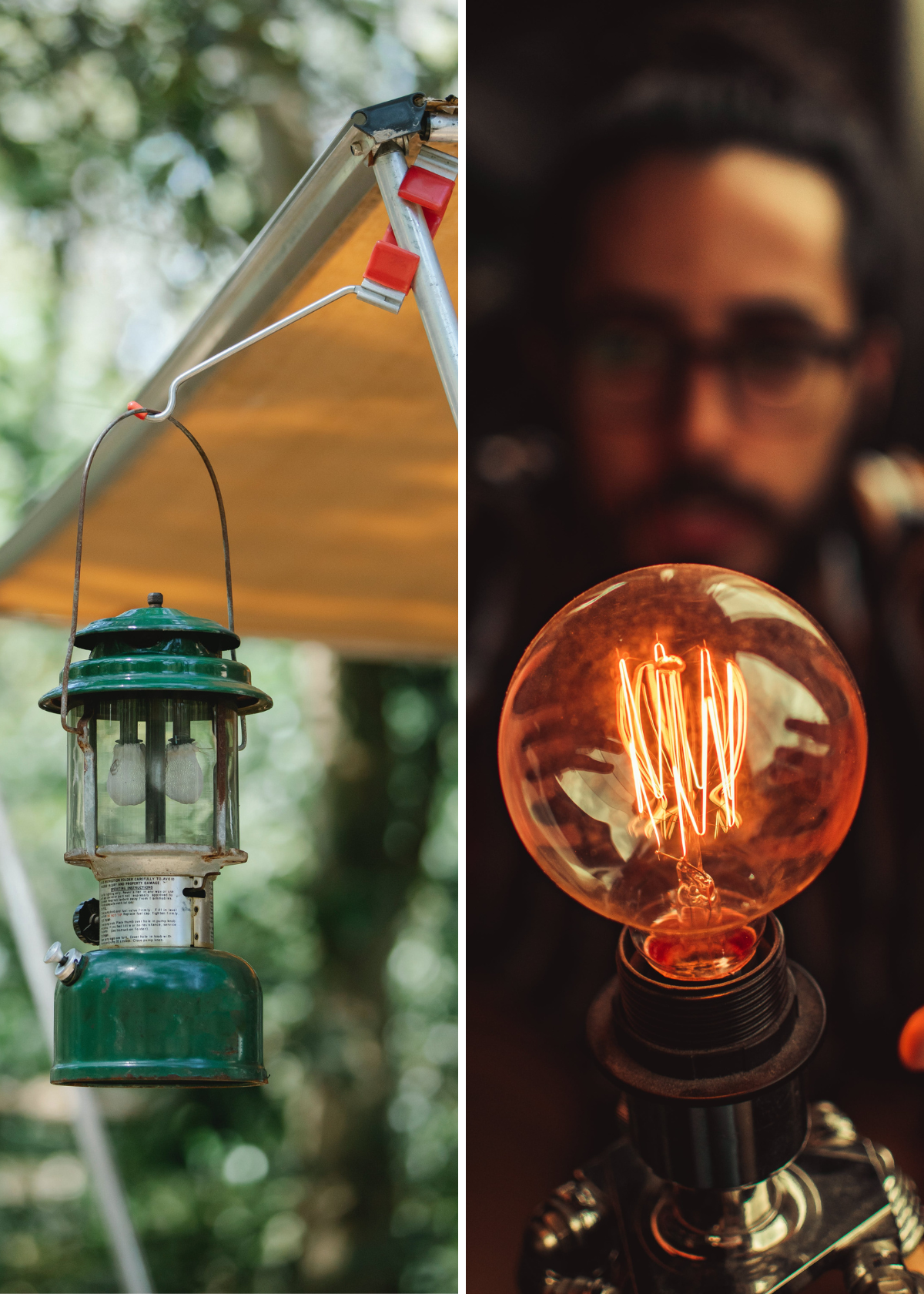Rechargeable light bulbs have become increasingly popular as a reliable lighting solution, especially in areas prone to frequent power outages. But how do these innovative devices store energy and what makes them different from traditional incandescent bulbs? In this article, we'll explore the inner workings of rechargeable led light bulbs, their charging mechanisms, and best practices to keep them glowing.
The Basics of Rechargeable LED Bulbs
Rechargeable led light bulbs are a marvel of modern technology, combining the energy efficiency of LEDs with the convenience of battery power. Unlike traditional bulbs, these specially designed lamps come with an internal battery that can be charged and used when the main electricity supply is unavailable. This feature makes them an essential item for emergency preparedness.
The internal battery is typically a lithium-ion or nickel-metal hydride cell, known for their ability to store energy effectively. When the bulb is connected to a power source, the battery begins to charge, much like how you would charge a smartphone or a laptop. Once fully charged, the bulb can provide illumination for an extended period, varying depending on the bulb's battery capacity.
Charging Process of Rechargeable Bulbs
Understanding how rechargeable bulbs get charged is crucial for their optimal use. The process is straightforward: when the bulb is screwed into a socket and the switch is turned on, the power supply charges the built-in battery. This happens without any additional steps or the need for a separate charger, making it a seamless process for the user.
It's important to note that using an incompatible charger or power source can damage the bulb's battery and reduce its lifespan. Therefore, it's good practice to follow the specific guidance provided in the user manual that comes with the bulb. This ensures that the charging time and power requirements are met, preventing any potential issues.
The Role of the Internal Battery
The internal battery is the heart of a rechargeable led bulb. It's what allows the bulb to function independently of a power supply, providing light in the dark. The battery's capacity determines how long the bulb can stay lit after being fully charged. Most rechargeable light bulbs can last for several hours, with some models even capable of providing brightness for a whole night.
To maintain the battery's health, it's essential to avoid extreme temperatures and to store the bulbs in a cool, dry place. Heat can degrade rechargeable batteries over time, so keeping them away from heat sources is a must. Additionally, it's recommended to fully charge the bulbs before their first use to ensure they reach their maximum battery capacity.
Sure, let's expand the article with two new sections that will provide additional insights into the topic.
Environmental Impact of Rechargeable Bulbs
Have you ever wondered what happens to the environment when you switch to rechargeable bulbs? It's a green step forward! Unlike traditional bulbs, rechargeable ones with a built-in battery significantly reduce waste. Each time a power outage strikes, these bulbs work seamlessly, saving you from the hassle of lighting candles or using flashlights. This not only conserves energy but also minimizes the carbon footprint associated with the production and disposal of single-use batteries.
Moreover, the bulb's battery capacity plays a crucial role in determining how eco-friendly it is. A higher capacity means fewer charges and, consequently, less energy consumed over the battery's lifespan. Manufacturers are constantly innovating to extend the life of these batteries, ensuring that your light bulb is not just a source of illumination but also a testament to sustainable living. By following the manufacturer's instructions for care and maintenance, you can further enhance the environmental benefits of your rechargeable bulbs.
Upgrading Your Home with Smart Rechargeable Bulbs
In the era of smart homes, rechargeable bulbs are not just about dealing with a power outage; they're about elevating your living experience. Imagine a bulb that not only lights up your room but also connects to your home network, allowing you to control it via a device like your smartphone or voice assistant. These smart bulbs often come with a battery backup, ensuring that they stay on even when the power goes off, keeping your home bright and functional.
Upgrading to smart rechargeable bulbs might require an initial investment, but the convenience and control they offer are unparalleled. You can set schedules, adjust brightness, and even change colors to suit your mood or activity. And when it's time to recharge or replace the built-in battery, the process is usually straightforward—often as simple as plugging the bulb into a power source. With smart technology, your light bulb becomes more than just a light source; it becomes an integral part of your connected home ecosystem.
These sections aim to not only inform but also engage the reader by discussing the environmental benefits and the integration of smart technology with rechargeable bulbs.
Compatibility with Light Fixtures
One of the great advantages of rechargeable led bulbs is their compatibility with standard light fixtures. This means they can be used just like regular bulbs in lamps, ceiling lights, and other fixtures. There's no need for special adapters or modifications; simply screw the bulb into the socket, and it's ready to charge and illuminate.
However, it's important to check if the light fixture has a circuit breaker or any feature that might interrupt the charging process. Some fixtures are designed to conserve energy by cutting off power when the bulb is not in use, which could prevent the bulb from charging properly.
Advantages Over Traditional Bulbs
Rechargeable led bulbs offer several advantages over traditional incandescent and even regular LED bulbs. They are more energy efficient, reducing electricity costs and environmental impact. During power outages, they provide a continuous source of light, eliminating the need for candles or flashlights.
Moreover, the longevity of LEDs means that rechargeable led bulbs need to be replaced less frequently than traditional bulbs. This not only saves money in the long run but also reduces waste, contributing to a more sustainable lifestyle.
Care and Maintenance
To ensure the longevity and performance of rechargeable led bulbs, proper care and maintenance are essential. Always follow the manufacturer's instructions for charging and usage. Avoid overcharging the bulbs, as this can reduce the battery's lifespan. It's also a good practice to periodically check the bulbs and keep them charged, so they're ready for use during an emergency.
If a bulb stops working, it might not necessarily mean that it needs to be replaced. Sometimes, simply resetting the bulb or checking the power source can resolve the issue. If the bulb is beyond repair, make sure to dispose of it properly, following local regulations for battery disposal.
Innovations and Varieties
Rechargeable led bulbs come in various shapes and sizes, catering to different needs and preferences. Some are designed to mimic the appearance of traditional bulbs, while others have a more modern look. There are also bulbs with adjustable brightness levels, allowing users to set the desired level of illumination for different situations.
As technology advances, we can expect to see even more innovations in rechargeable lighting. Features like smart connectivity, color-changing capabilities, and improved energy storage are just a few developments that could enhance the functionality of these bulbs in the future.
FAQs
Q: How long does it take for a rechargeable bulb to get fully charged?
A: The charging time for a rechargeable bulb can vary depending on the model and manufacturer. Generally, it takes a few hours to get fully charged. Refer to the user manual for specific guidance on charging times.
Q: Can rechargeable bulbs be used in any lamp or light fixture?
A: Yes, most rechargeable led bulbs are designed to fit standard sockets and can be used in a variety of lamps and light fixtures. However, ensure that the fixture allows for proper charging of the bulb.
Q: What should I do if my rechargeable bulb isn't charging?
A: First, check the power source and ensure the bulb is properly connected to the socket. If the issue persists, consult the user manual or contact the manufacturer for assistance. Remember to avoid using an incompatible charger or power source.
Summary
Rechargeable led light bulbs are a smart and sustainable choice for lighting, especially in areas prone to power outages. They work by charging an internal battery through a regular power supply, allowing them to provide light even when the electricity supply is cut off.
These bulbs are compatible with standard light fixtures and offer the benefits of energy efficiency and convenience. Proper care and adherence to the manufacturer's instructions are key to maximizing their lifespan and effectiveness.








